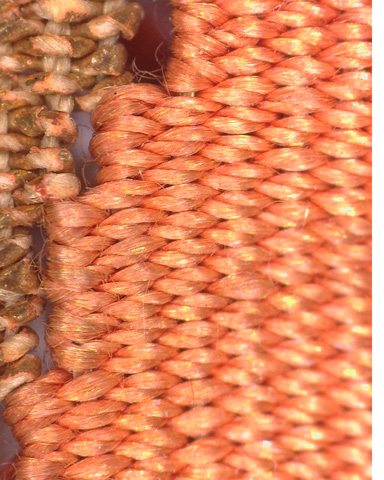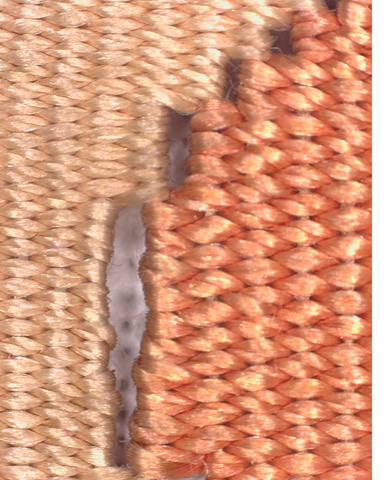Materials Glossary Details
Tapestry Weave
Mactaggart Art Collection Read more about this collection »
Tapestry Weave: referred to as ke-si (cut silk or carved silk), is a weft-woven silk fabric that includes undyed warp thread and multiple different-coloured weft threads to create intricate and colourful patterns.…
Tapestry Weave: referred to as ke-si (cut silk or carved silk), is a weft-woven silk fabric that includes undyed warp thread and multiple different-coloured weft threads to create intricate and colourful patterns. The weft threads only pass through specific colourful sections, rather than from selvage to selvage, to create particular patterns in a plain weave. Ke-si fabric has distinctive slits at the edge of each colourful section, which result from the different types of joining techniques used during production. Ke-si fabric is also often completely reversible, depending on the talent of the maker. While the construction is a simple plain weave, the complexity of many differently-coloured yarns means that tapestry fabric can only be woven on a handloom.
This very time consuming and highly skilled technique often results in fabric that mimics paintings, making it highly valued and appreciated. It was often used in panels that were made in the style of paintings and used as household decorations, but can also be found in garments.
Related Definitions:
Fiber: Natural (plant or animal) or synthetic material formed into a thread that is longer than it is wide.
Warp: lengthwise yarn that runs from the top to the bottom of the fabric. This yarn is typically held stationary during weaving.
Weft (or Fill or Filling Yarns): crosswise yarn that runs selvedge to selvedge, under and over the warp yarns in varying patterns to create different weave structures.
Yarn: A continuous length of interlocked fibers, which may or may not be twisted.
Plain Weave (or Tabby Weave): the most basic weave structure that consists of one warp and one weft thread intersecting at a right angle. The front and backside of the resulting fabric are the same.
Object Information
There are 117 objects associated with this Materials Glossary Term















